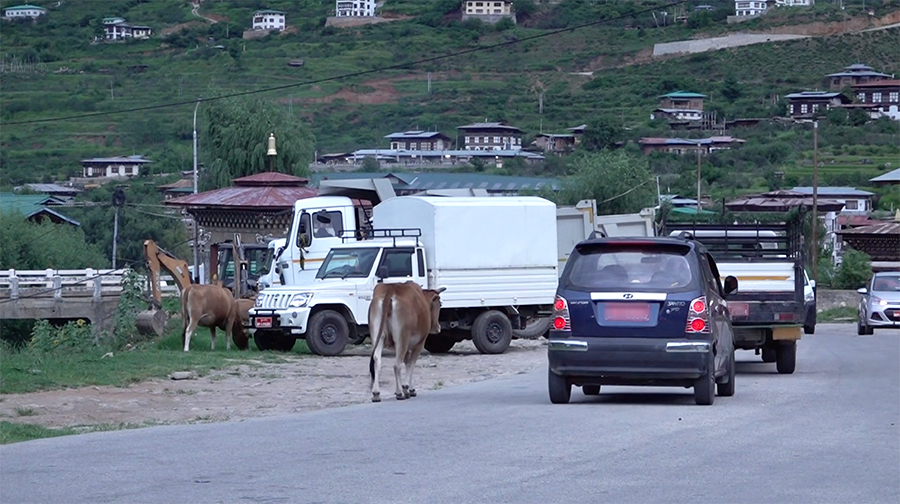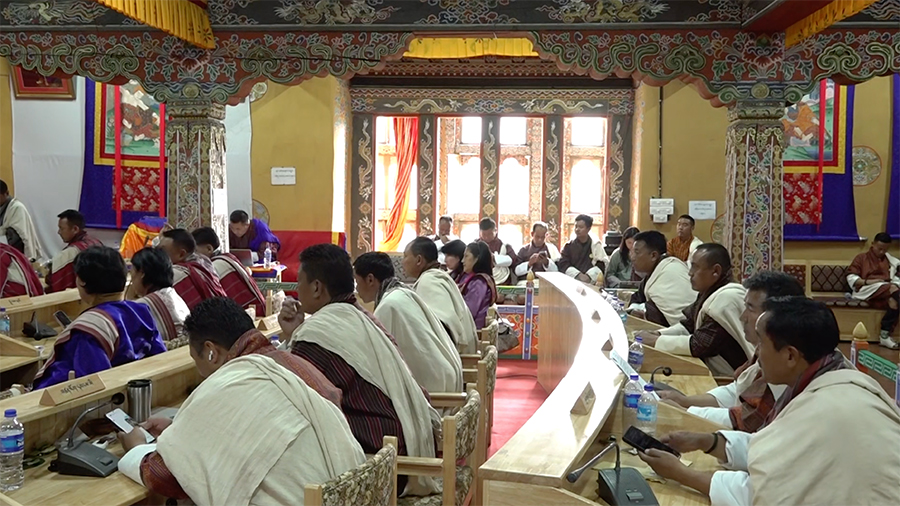 Paro is seeing a rising number of stray cattle damaging crops and raising safety concerns among residents. To address the issue, local leaders have now decided to explore the possibility of electronically chipping cattle to trace ownership and discourage abandonment. The decision was made during the Dzongkhag Tshogdu session held yesterday.
Paro is seeing a rising number of stray cattle damaging crops and raising safety concerns among residents. To address the issue, local leaders have now decided to explore the possibility of electronically chipping cattle to trace ownership and discourage abandonment. The decision was made during the Dzongkhag Tshogdu session held yesterday.
 Most of these cattle have been abandoned and now roam the streets freely. They have been reported damaging crops and posing serious risks to both pedestrians and motorists.
Most of these cattle have been abandoned and now roam the streets freely. They have been reported damaging crops and posing serious risks to both pedestrians and motorists.
Currently, the stray cattle are captured and taken to a shelter in Dopshari Gewog, where owners are asked to reclaim their animals. However, many refuse to do so, fearing fines. According to staff at the shelter, many of the abandoned cattle are old and in poor health.
 The shelter now houses 20 cattle, far exceeding its capacity.
The shelter now houses 20 cattle, far exceeding its capacity.
 This issue was raised during the Dzongkhag Tshogdu session. Local leaders proposed introducing a microchipping system.
This issue was raised during the Dzongkhag Tshogdu session. Local leaders proposed introducing a microchipping system.
Lango Gup Gem Tshering said, “If we insert chips in cattle, we can trace their owners. Once identified, we can fine them and make them collect their cattle from the shelter.”
However, the district livestock officer and the thromde ngotsab suggested auctioning off unclaimed stray cattle.
“In Darla, they auction stray cattle every two days. Farmers seeking working oxen find what they need. This system has significantly helped control stray cattle in the area. I believe it’s time we adopt a similar approach in Paro,” said Loden Jimba, the principal district livestock officer.
Thromde Ngotsab Deki Lhamo added, “Each time we take stray cattle to the shelter, we bring in around 10 to 12 animals at a minimum. The people managing the shelter are struggling to cope. If we can explore the possibility of auctioning the cattle, it could help ease the burden on the shelter and also address the public concerns.”
Despite the support for auctioning, the house chose to prioritise preventive measures over removal.
After deliberations, the members voted in favour of the microchipping proposal.
The meeting directed the district livestock office to study the feasibility of the chipping system and to begin consultations with relevant stakeholders for its implementation.
Karma Samten Wangda
Edited by Sangay Chezom








